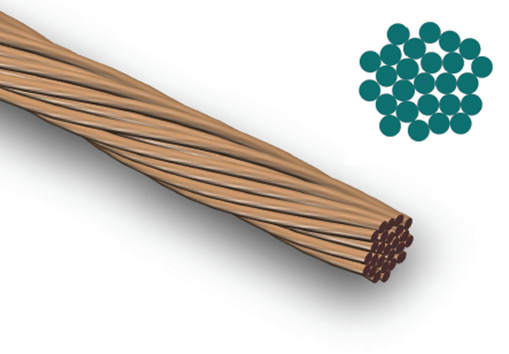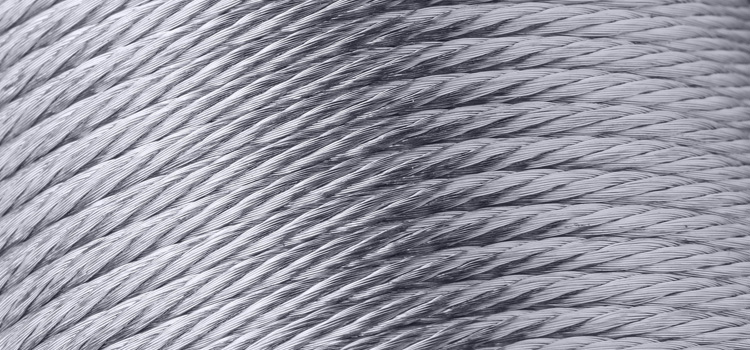Both tinned and bare bunched wires are produced at our advanced technology bunching lines up to 16 mm² cross-sectional area.
• Bunched wires are produced through compressing and stranding fine wires of a certain number and diameter.
• Bunched wires are more flexible and easier to use than a solid conductor that has the same cross-sectional area.
• In order to obtain more flexible wires with same cross-sectional area, the diameter of the single wires are drawn down and bunched together.
• Bunched wires are categorized based on their geometric structures that are determined pursuant to their area of use, their lay lengths and lay directions.
TYPES OF STRANDING
REGULAR BUNCHED WIRES
• Regular bunched wires are obtained by stranding one or more multi wire bundles with a certain lay length.
• There is no geometric structure in the wires of the single copper wires.
• Concentric bunched wires have more smooth surface comparing to regular bunched wires.

CONCENTRIC BUNCHED WIRES
• Concentric bunched wires are the most preferred form of stranding in cables and conductors.
• In this type of stranding, there is a wire at the center and one or more layers surrounding this wire.
• The number of wires of each layer is 6 more than the wires present in an inner layer.
• A more rounded surface is obtained than regular bunched wires

ROPE BUNCHED WIRES
• It is a mixture of regular bunched and concentric bunched wires.
• Ropes can be produced in two different ways depending on whether the lower layers are regular bunched or concentric bunched.
• There are three types of rope stranding, which structurally differ.



